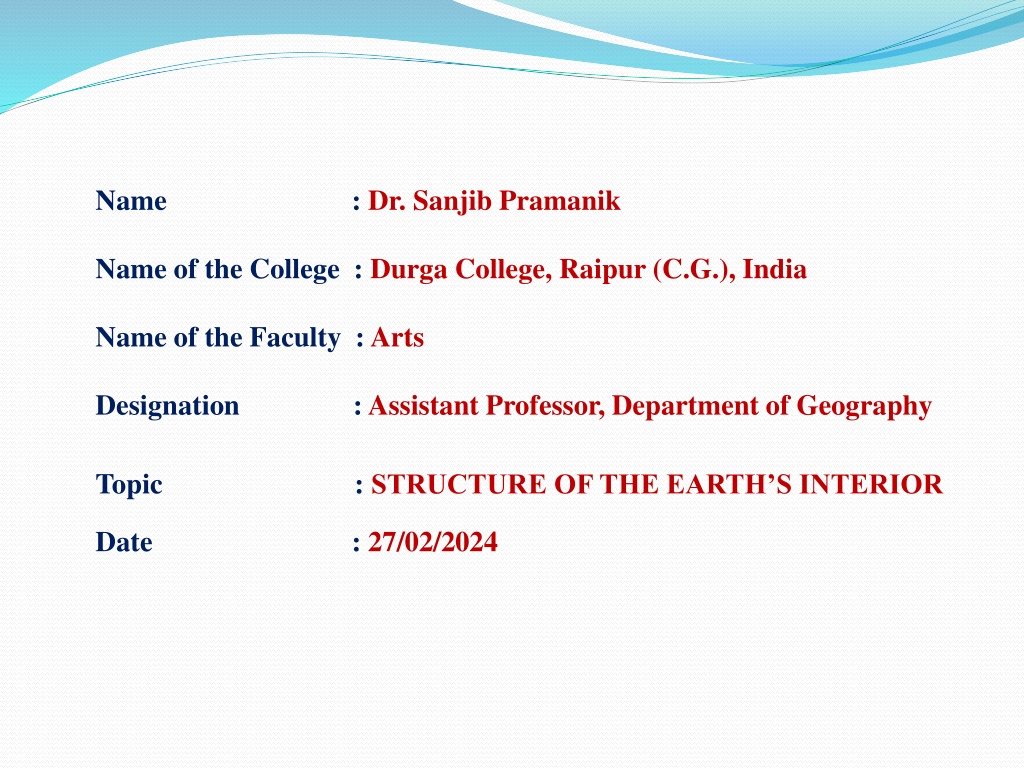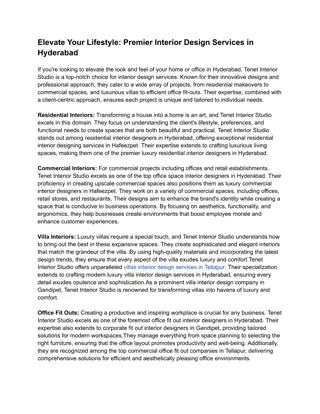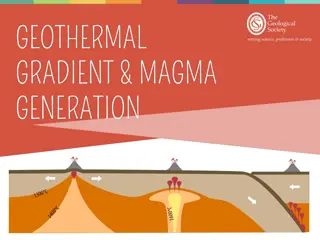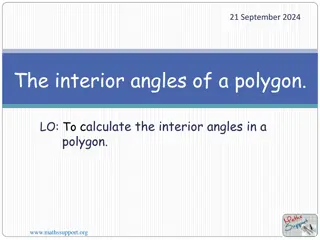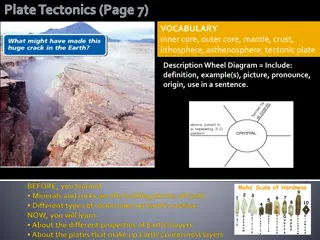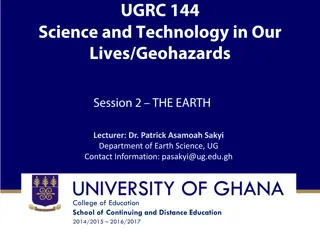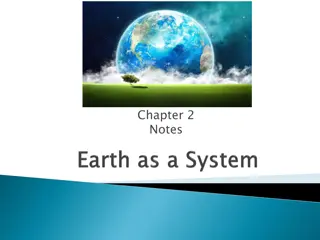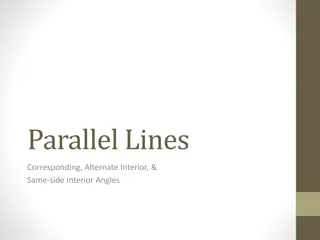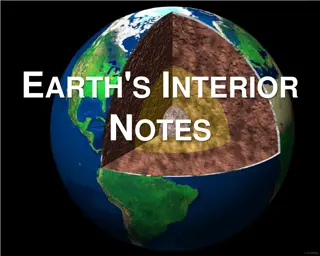Understanding the Structure of the Earth's Interior
Exploring the Earth's interior is challenging due to its vast size and changing composition. Through mining, drilling, and seismic analysis, scientists have gained insights into the layers beneath the surface. Direct and indirect sources provide information on the Earth's structure, including seismic waves, gravity anomalies, and magnetic sources.
Uploaded on Oct 09, 2024 | 0 Views
Download Presentation

Please find below an Image/Link to download the presentation.
The content on the website is provided AS IS for your information and personal use only. It may not be sold, licensed, or shared on other websites without obtaining consent from the author. Download presentation by click this link. If you encounter any issues during the download, it is possible that the publisher has removed the file from their server.
E N D
Presentation Transcript
Name : Dr. Sanjib Pramanik Name of the College : Durga College, Raipur (C.G.), India Name of the Faculty : Arts Designation : Assistant Professor, Department of Geography Topic : STRUCTURE OF THE EARTH S INTERIOR Date : 27/02/2024
Dr. Sanjib Pramanik Assistant Professor Department of Geography Durga College, Raipur
Introduction It is not possible to know about the earth s interior by direct observations because of the huge size and the changing nature of its interior composition. It is an almost impossible distance for the humans to reach till the centre of the earth (The earth s radius is 6,370 km). Through mining and drilling operations we have been able to observe the earth s interior directly only up to a depth of few kilometres. The rapid increase in temperature below the earth s surface is mainly responsible for setting a limit to direct observations inside the earth. But still, through some direct and indirect sources, the scientists have a fair idea about how the earth s interior look like.
Sources of Information About the Interior of the Earth 1. Direct Sources: i. Rocks from mining area ii. Volcanic eruptions 2. Indirect Sources i. By analyzing the rate of change of temperature and pressure from the surface towards the interior. ii. Meteors, as they belong to the same type of materials earth is made of. Gravitation, which is greater near poles and less at the equator. iii. Gravity anomaly, which is the change in gravity value according to the mass of material, gives us information about the materials in the earth s interior. iv. Magnetic sources. v. Seismic Waves: the shadow zones of body waves (Primary and secondary waves) give us information about the state of materials in the interior.
SEISMIC WAVES Surface Waves P-Waves S-Waves
P-Waves Primary (they arrive first), Pressure, or Push-Pull. Material expands contracts and particles move back and forth in the path of wave. Sound waves through solids, liquids or gasses. S-Waves Secondary (arrive Shear, or Side-to-side. Material shears out of shape and snaps back. Travels only through solids. and that travel later),
Contd... Surface Waves Travel along the earth s surface. The slowest waves but the ones that damage in large earthquakes. Wave Shadow Zone The seismic shadow zone is the rea of the Earth's surface where seismographs cannot detect an earthquake after the waves have passed through the earth. P waves are refracted by the liquid outer core and are not detected between 104 and 140 . S waves cannot pass through the liquid outer core and are not detected beyond 104 . This information led scientists in the early 1900s to deduce a liquid outer core
Crust Structure of Earth s Interior is Fundamentally Divided into Three Layers Mantle Core
Crust It is the outermost solid part of the earth, normally about 8-40 kms thick. It is brittle in nature. Nearly 1% of the earth s volume and 0.5% of earth s mass are made of the crust. The thickness of the crust under the oceanic and continental areas are different. Oceanic crust is thinner (about 5kms) as compared to the continental crust (about 30kms). Major constituent elements of crust are Silica (Si) and Aluminium (Al) and thus, it is often termed as SIAL (Sometimes SIAL is used to refer Lithosphere, which is the region comprising the crust and uppermost solid mantle, also). The mean density of the materials in the crust is 3g/cm3. The discontinuity between the hydrosphere and crust is termed as the Conrad Discontinuity.
Mantle The portion of the interior beyond the crust is called as the mantle. The discontinuity between the crust and mantle is called as the Mohorovich Discontinuity or Moho discontinuity. The mantle is about 2900kms in thickness. Nearly 84% of the earth s volume and 67% of the earth s mass is occupied by the mantle. The major constituent elements of the mantle are Silicon and Magnesium and hence it is also termed as SIMA. The density of the layer is higher than the crust and varies from 3.3 5.4g/cm3. The uppermost solid part of the mantle and the entire crust constitute the Lithosphere. The asthenosphere (in between 80-200km) is a highly viscous, mechanically weak and ductile, deforming region of the upper mantle which lies just below the lithosphere. The asthenosphere is the main source of magma and it is the layer over which the lithospheric plates/ continental plates move (plate tectonics). The discontinuity between the upper mantle and the lower mantle is known as Repetti Discontinuity. The portion of the mantle which is just below the lithosphere and asthenosphere, but above the core is called as Mesosphere.
Core It is the innermost layer surrounding the earth s centre. The core is separated from the mantle by Guttenberg s Discontinuity. It is composed mainly of iron (Fe) and nickel (Ni) and hence it is also called as NIFE. The core constitutes nearly 15% of earth s volume and 32.5% of earth s mass. The core is the densest layer of the earth with its density ranges between 9.5- 14.5g/cm3. The Core consists of two sub-layers: the inner core and the outer core. The inner core is in solid state and the outer core is in the liquid state (or semi-liquid). The discontinuity between the upper core and the lower core is called as Lehmann Discontinuity. Barysphere is sometimes used to refer the core of the earth or sometimes the whole interior.
